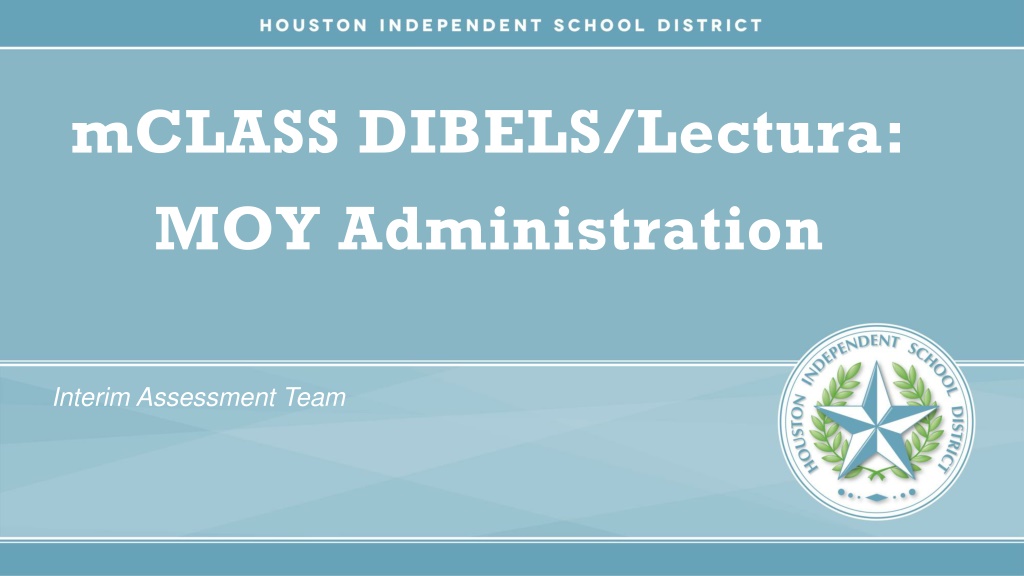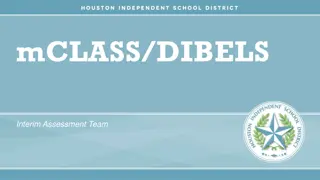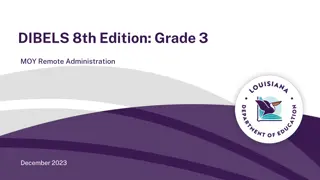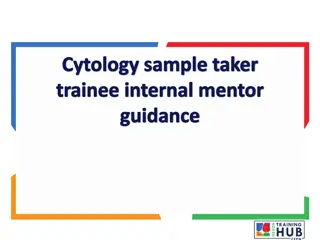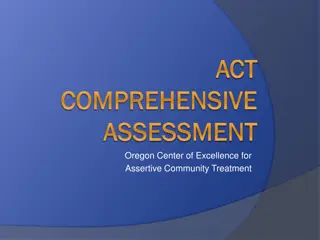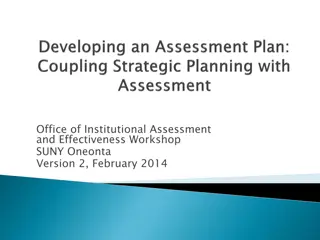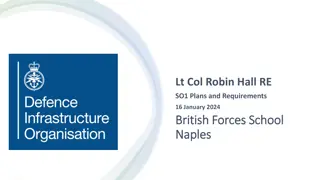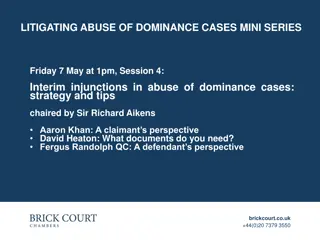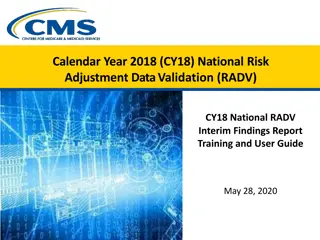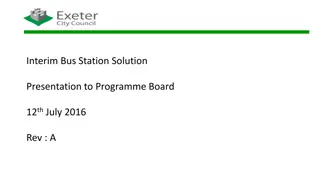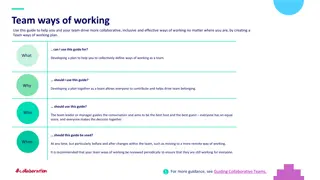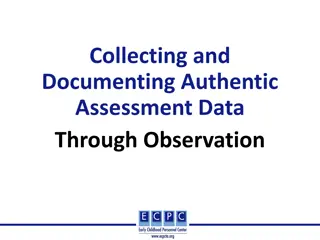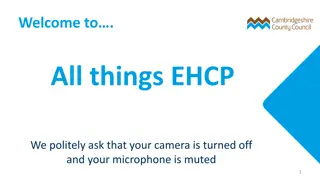Comprehensive Overview of mCLASS DIBELS/Lectura Interim Assessment Team
mCLASS DIBELS/Lectura is a comprehensive interim assessment program designed to help educators measure student progress in reading proficiency. The program includes Benchmark assessments, Progress Monitoring tasks, reinforcement activities, specialized grouping, and instant access to scores. With a focus on identifying students in need of reading support and intervention, mCLASS DIBELS/Lectura also offers Dyslexia Screener for Teacher Appraisal. The assessment window dates are specified, and guidelines for logging in and accessing student materials are provided.
Download Presentation

Please find below an Image/Link to download the presentation.
The content on the website is provided AS IS for your information and personal use only. It may not be sold, licensed, or shared on other websites without obtaining consent from the author. Download presentation by click this link. If you encounter any issues during the download, it is possible that the publisher has removed the file from their server.
E N D
Presentation Transcript
mCLASS DIBELS/Lectura: MOY Administration Interim Assessment Team
Welcome & Norms For more information, please visit: www.houstonisd.org/screenerinfo www.houstonisd.org/datarichyear (Fall) 2
Interim Assessment Team Michael Kucharczyk Interim Director Gary Matthews Coordinator I North/NES Ericka Felix Coordinator I South Takeshia Johnson "TJ" Coordinator I Central Airam Bolanos Coordinator I West Interim: MAP Growth, MAP Reading Fluency, NAEP, CBE, CIRCLE, mCLASS DIBELS/Lectura, TEA Interim 3
Session Items Login Gating Rules Composite Score Required Measures (DIBELS/Lectura) Language Guidance Accommodations Teacher Test Assignment Dyslexia Flagging Resources & Support Accessing test materials 4
Participant Notebook Training Materials 5
What is mCLASS DIBELS/Lectura? DIBELS provides Benchmark assessments, Progress Monitoring, reinforcement activities, specialized grouping, and instantaneous access to scores. The Benchmark assessments provide quick and accurate identification of students in need of reading support and intervention. The Progress Monitoring tasks are used to track performance on the skills in which students require additional support. 6
Purpose To assess a thorough knowledge/understanding of students development towards reading proficiency. Dyslexia Screener Required for Teacher Appraisal Evaluation 7
Window Dates Time of Year BOY MOY EOY Dates September 18th - October 27th January 10th - January 31st April 22nd - May 10th 8
How to Login Teachers should have accounts set up in Clever. Locate the Amplify icon under Assessments Use the search box to find Amplify If Amplify does not appear, contact servicedesk@houstonisd.org 9
Accessing Student Materials 4 1 5 3 2 10
Accessing Student Materials Take 2 minutes to: Log in to Clever Access Amplify PD Library Download K and 1 Benchmark Student Materials 11
Gating Rules How do gating rules work? Gating rules currently apply to K-3. The gating measure is available to assess by clicking the Assess icon. You can think of these measures as prerequisites for the other required measures. The gated measures are locked (the Assess icon is inactive) for a student until you assess the gating measure. In the example below, the NWF and WRF measures are gated for the Grade 3 student: 12
Gating Rules: Test-Out By testing out high performing students. Some measures have a test-out rule that triggers when a student scores above the benchmark cut-score, and any other required measures are "tested-out". 13
Gating Rules: Discontinue By discontinuing benchmark assessment for low-performing students. Each subtest has a discontinue rule called the "discontinue measure rule" that triggers if a student gives zero correct answers within the first few responses of the assessment (the threshold varies by measure). When the discontinue rule is triggered, a popup prompts you stop assessing the measure. 14
Gating Rules by Measures & Grade/TOY Each grade level has specific gating measures at different times of year. For example, in Kindergarten BOY the gating measure is PSF, and the gated measures are NWF and WRF. See the table below for details: 15
Gating Rules for Lectura Administration begins with FNL and continues with FSS, FSL, and LSS. If a student discontinues on FSL, K-Inicio FSL can be administered to provide teachers with relevant data on the most emergent kinder skills. If a student scores at or above benchmark on LSS, FEP should be administered. Administration begins with FNL and continues with FSS, FSL, LSS and FEP. If a student scores at or above benchmark on FEP, FLO should be administered. 16
Measure Icons Key Blue = Required White = Optional Faded Out = Gated - Complete blue assessments until they become available 17
Composite Score Benchmarks English Scores DIBELS Composite Score Benchmarks K-8 Lectura Composite Score Benchmarks K-3 18
Required Measures Required: RAN-Grade 1 (Dyslexia Screener) * Optional measures NES/NES-A campuses are only required to test grades K-4 20
Letter Naming Fluency (LNF) The student is presented with a page of uppercase and lowercase letters and asked to name the letters. (Grades K-1) Scoring Rules LNF Demonstration 21
Letter Naming Fluency (LNF) - Key Action If you are noticing a large number of students at your campus receiving a score of "0" on the assessment, double-check: Did teachers tap every letter that students said correctly by accident? - 22
Phonemic Segmentation Fluency (PSF) The assessor says words, and the student says the individual sounds for each word. (Grades K-1) Scoring Rules PSF Demonstration 23
CFU: I SPY WITH MY LITTE EYE! PSF3.mp4 24
Nonsense Word Fluency (NWF) The student is presented with a list of VC and CVC nonsense words (e.g., sig, rav, ov) and asked to read the words. (Grades K-3) Scoring Rules NWF Demonstration 25
CFU: I SPY WITH MY LITTE EYE! NWF.mp4 26
Word Reading Fluency (WRF) The student is presented with a page of words and asked to read as many words as possible within 1 minute. (Grades K-3) Scoring Rules WRF Demonstration 27
Oral Reading Fluency (ORF) The student is presented with a reading passage and asked to read aloud. (Grades 1-4) Scoring Rules ORF Demonstration 28
Maze The student is presented with a reading passage where some words are replaced by a multiple-choice box that includes the original word and two distractors. (Grades 2-4) MAZE Online Overview Student Online Assessment Management 29
RAN RAN provides an indication of how quickly students can name aloud numbers and retrieval of phonological information. (Grade 1) RAN Walkthrough RAN Demonstration 30
Fluidez en nombrar letras (FNL) FNL assesses students ability to recognize individual Spanish letters and say their names. (Grades K-1) Scoring Rules FNL Administration 32
Fluidez en la segmentacion de silabas (FSS) FSS assesses students ability to segment a word into as many syllables as possible. (Grades K-1) Scoring Rules FSS Administration 33
Fluidez en los sonidos de las letras (FSL) FSL is a standardized measure of alphabetic understanding that assesses a student s knowledge of letter-sound correspondences. (Grades K-1) Scoring Rules FSL Administration 34
Fluidez en los sonidos de silabas (LSS) LSS is a standardized measure of the alphabetic principle and decoding that assesses a student s ability to fluently decode orthographically regular syllables comprised of two, three, or four phonemes. (Grades K-1) Scoring Rules LSS Administration 35
Fluidez en la lectura de palabras (FEP) FEP is a standardized measure that assesses student automaticity with the alphabetic code and involves reading real words out of context. (Grades K-3) Scoring Rules FEP Administration 36
Fluidez en la lectura oral (FLO) FLO is a standardized, individually administered measure of accuracy and fluency with connected text. (Grades 1-6) Scoring Rules FLO Administration 37
Cul palabra? (CP) CP is a standardized, group-administered maze-style measure of reading comprehension. The purpose of a maze procedure is to measure the reasoning processes that constitute comprehension. (Grades 2-6) Scoring Rules CP Administration 38
Dyslexia Flagging: DIBELS Risk Indicator RAN is one of the measures that factors into the risk indicator on the class summary report. An exclamation point displays next to a student s name when both the Composite Score and Spelling are Well Below Benchmark. These results indicate additional risk of reading difficulties, including those associated with dyslexia. Required for all 1st grade students (MOY) & Kindergarten students (EOY). 39
Dyslexia Flagging: Lectura Risk indicator The risk indicator flag is a feature in mCLASS reports for educators to be able to see the students whose assessment results suggest they might be at additional risk for reading difficulties, including difficulty related to dyslexia. In grades K-1 the risk indicator or exclamation mark appears next to a student s name if their composite score is WBB AND their FNL, FSL, and FEP scores are also all WBB. In grades 2-3 the risk indicator appears next to the student s name if their composite score AND both their FEP and FLO word count per minute scores are WBB. Required for all 1st grade students (MOY) & Kindergarten students (EOY). 40
Accommodations Approved Unapproved Quiet setting for testing Breaks in between measures Large Print Colored overlays, filters, or lighting adjustments Assistive technology (hearing aids, assistive listening devices) Use of a marker or ruler to focus student attention on the materials Extending the time Repeating practice items Providing different or extra models of the task Adding to or changing administration directions Offering unapproved prompts and feedback Approved accommodations should only be used with students who have a documented need for such supports, such as a 504 plan or IEP. 41
Teacher Test Assignment The Reading teacher of record will administer the mCLASS DIBELS/Lectura assessment to their own students for all grade levels. If campuses would like multiple individuals to administer the assessment to a group of students, they can use the paper materials available in the Amplify Clever application to administer the assessment and input the results with the teacher afterwards. Note: Using paper materials to provide the assessment may lead to over- assessment of students due to the gating rules not being applied. 42
Oaths Required for all district and state-mandated test programs conducted by a campus. Campuses are required to keep oaths in the Test Security Folder for one full year, as well as eSubmit them. Seating Charts are not required for mClass DIBELS/Lectura. 43
Important Dates Teachers should verify students in mClass by December 21st. Any students enrolled after January 26th will not test. 44
Resources mClass DIBELS/Lectura Self-Paced Modules Student Assessment Webpage mClass DIBELS Scoring Rules Table mClass Lectura Scoring Rules Table DIBELS/Lectura Completion Report-Task Card OnTrack_mClass DIBELS/Lectura-Task Card Oath 45
Student Assessment Support Email: Book 1 on 1 Support assessment@houstonisd.org 46
Attendance & Feedback Survey https://tinyurl.com/4SAsurvey Form Link 47
